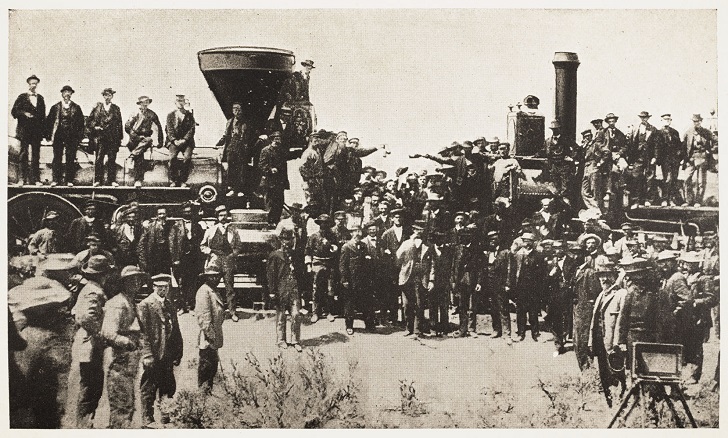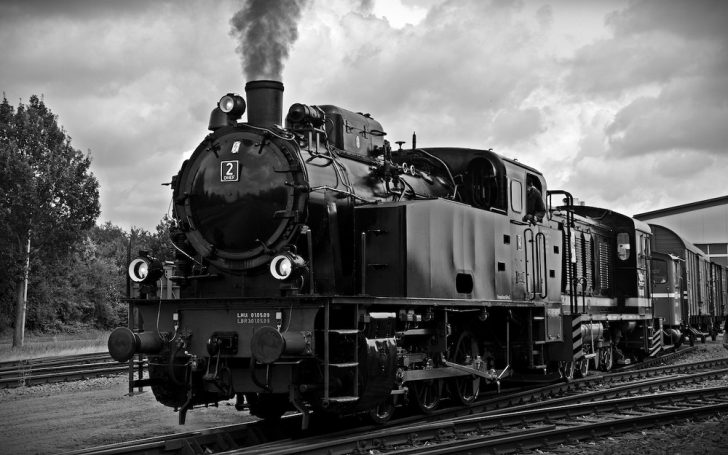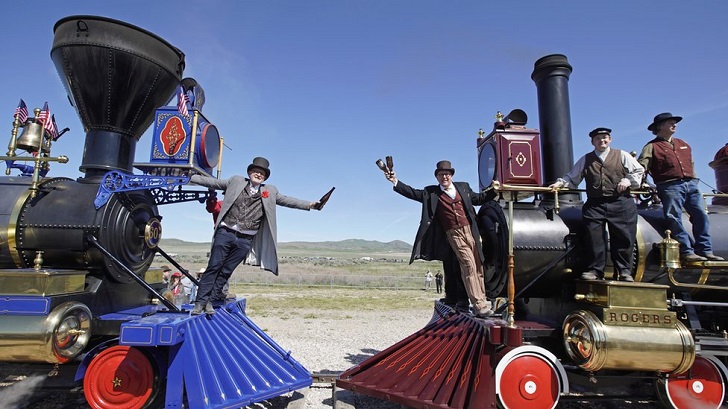In the annals of history, certain events reverberate far beyond their immediate surroundings, shaping the course of nations and cultures. The transcontinental railroad’s completion on May 10, 1869, marked one such moment for the United States.
This monumental achievement connected the East and West coasts and set in motion a series of transformative changes that would forever alter the nation’s landscape, economy, and culture.
A Spike Heard Across the Nation
As the final spike was driven into the Utah desert, the resonance of the sledgehammer travelled instantaneously through telegraph wires that were ingeniously wrapped around the spike.

BBC/ GETTY IMAGES | The Transcontinental Railroad, once completed, allowed Americans to settle the west
The news echoed from San Francisco to New York and even further across the ocean, where cannons were poised to signal the accomplishment. The world was awakened to the transcontinental railroad’s completion, and America was now a player on the global stage.
Shrinking the World
With the last spike driven, a new era of connectivity was ushered in. Just a day later, the first transcontinental freight train embarked on its journey from California to the East Coast, carrying a shipment of Japanese teas—an emissary of the Asian markets. Regular passenger service was inaugurated on May 15 despite the need for repairs.
Now, travellers could traverse the distance between San Francisco and New York in just a week, bypassing the dangerous ocean voyages that had once been the norm. The world seemed to shrink as the coasts became linked, and America’s presence on the global stage intensified.

Pixabay/ Pexels | The Civil War paved the way for the Transcontinental Railroad
A Vision Partially Fulfilled
The dream of railroad pioneer Asa Whitney was to reposition America as a central hub for exchange between Asia and Europe. Though the transcontinental railroad’s completion brought the United States closer to that vision, it was not without competition.
Six months later, the Suez Canal opened in Egypt, providing a waterway that continued to circumvent American soil and facilitate exchange between Asia, India, and Europe.
Economic Surge and Cultural Exchange
Within a decade of its completion, the transcontinental railroad shipped $50 million worth of goods annually between coasts, driving an economic boom. It opened the western markets to the East and vice versa and facilitated the movement of raw materials from the heartland to eastern industries. The railroad became America’s first technology corridor, catalyzing growth and innovation.
Moreover, the railroad’s influence extended beyond goods. Travel across the continent in mere days exposed Americans to the vastness of their nation. Conversations traversed the nation, and ideas found swift dissemination. Books written on the West Coast could be read on the East Coast within a week, fostering a transcontinental culture and stimulating intellectual discourse.

BBC/ GETTY IMAGES | In July 1862, President Abraham Lincoln signed the Pacific Railway Act, often known as the Railroad Act
Unintended Consequences
Yet progress came at a cost. The transcontinental railroad marked another step in the encroachment of white settlers on Native American lands.
As settlers moved westward along the railroad’s web of tracks, Native Americans were forced onto reservations, and the buffalo herds they depended on were decimated. The railroad also introduced the buffalo to industrial production, leading to mass hunting and near-extinction.
Branching Outward
While the transcontinental railroad was groundbreaking, it was not the sole path of travel for long. A network of rail lines branched out from its origin points, connecting north and south, enabling settlers to claim vast lands. By 1900, multiple routes, including the Northern and Southern Pacific, spanned from Mississippi to the Pacific, replicating the pioneering road’s journey.







